Barely three years after independence from British colonial rule, Nigeria, the most populous nation in Africa, collapsed into a civil war.
The Nigerian Civil War, also known as the Biafran War, became one of the most divisive wars in the history of post-independence Africa. Its traumatic effects, evident in persistent ethnic animosities and distrust, continues to shape the narrative of Nigerian identity and the nation’s future.
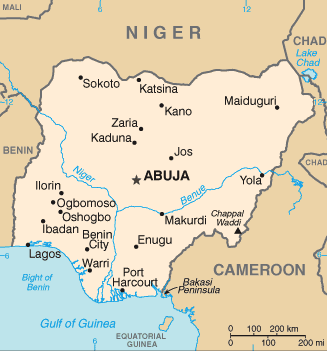
Equally important, the historical origin and the painful experiences of that three-year war (from July 1967 to January 15, 1970) validates the assumption that multiethnic nationhood, which African nationalists constructed from the inherited colonial boundaries, was fragile, even untenable.
Indeed, most historians would agree that the Nigerian Civil War represented the most unambiguous testimony of the failure of colonial rule in Africa. European imperial powers neglected to lay the foundation for nation-states from the various cultural and territorial entities they had forcibly amalgamated into convenient colonial holdings.
But, considering that Nigeria has successfully remained a vibrant nation fifty years after that heinous war, we can also celebrate the remarkable resilience of African nationhood despite the political, religious, socioeconomic, and cultural challenges.
The crisis that would become the Nigerian Civil War began on January 15, 1966 when a group of military officers, mostly of the Igbo ethnic group, overthrew Nigeria’s first democratic government. Their grievances included alleged corruption among public officials, the government’s failure to ensure equitable distribution of economic resources, and alleged attempts by northern elites to entrench the political hegemony of the Northern Region over the rest of the federation.
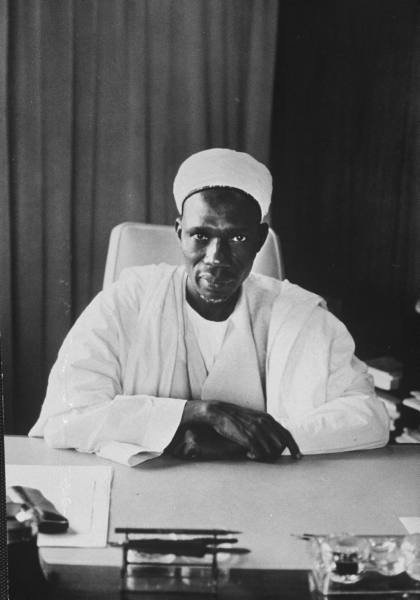
By the end of that fateful day, 22 top political leaders and military officers had lost their lives, an overwhelming majority of them northerners, including the Prime Minister Sir Tafawu Balewa and the Premier of the Northern Region, Sir Ahmad Bello and their wives.
The highest-ranking northern military officers were also eliminated, along with the Premier of the Western Region (of the Yoruba ethnic group). Moreover, the coup plotters handed over power to a military body led by General Johnson Aguysi Ironsi, the Commander of the Nigerian Army, who was also Igbo.
The dominance of Igbo officers in the coup, the assassination of the top northern politicians and the transfer of power to an Igbo general, raised the suspicion among northerners that the objective of the coup was to eliminate their leaders.
General Ironsi’s failure to prosecute the coup plotters and his imposition of a unitary system of governance—which Igbo politicians had sought at the time of independence as a way to gain political advantage and neutralize the hegemony of the north—further enflamed the suspicion of an orchestrated effort to impose Igbo dominance over the rest of the country.
In response, a group of northern officers organized a countercoup in July 1966. This countercoup turned out to be bloodier, and this time, Igbos were the victims. Many high-ranking Igbo officers, including the General Ironsi, were assassinated.
A new military government was led by Lieutenant Colonel (later General) Yakubu Gowon. A Christian from the middle belt, Gowon, was widely expected to be a unifier. However, his inability to stop the massacre of Igbos angered Igbo elites. The result was the declaration of secession of the Igbo-majority Eastern Region, now renamed Biafra, from the Nigerian federation.
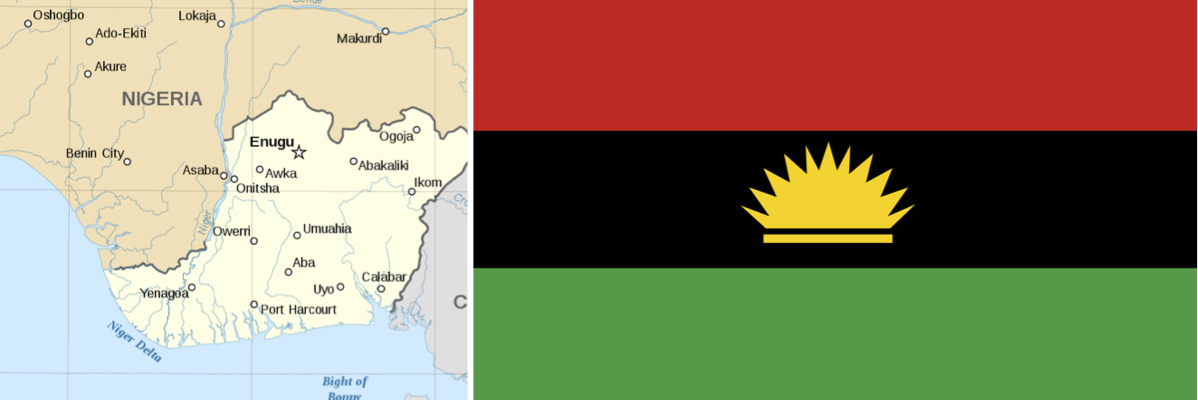
Map of the de facto republic of Biafra (left); the flag of the Republic of Biafra (right).
Colonel Chukwuemeka Ojukwu, the military governor of Eastern Nigeria during the Ironsi regime, became the Head of State of the Republic of Biafra and began establishing the infrastructure of a sovereign nation, including the minting of currency and establishing diplomatic relations with other nations. Seeking to prevent the breakup of Nigeria, the Federal Government immediately declared war on Biafra.
By mid-1967, Nigeria had collapsed into full-blown civil war between Biafra and the rest of the union. With its massive air power and large army, the Federal Government captured the oil facilities in the east, upon which the Biafran economy was dependent, as well as Nigeria’s most critical port city, Port Harcourt.
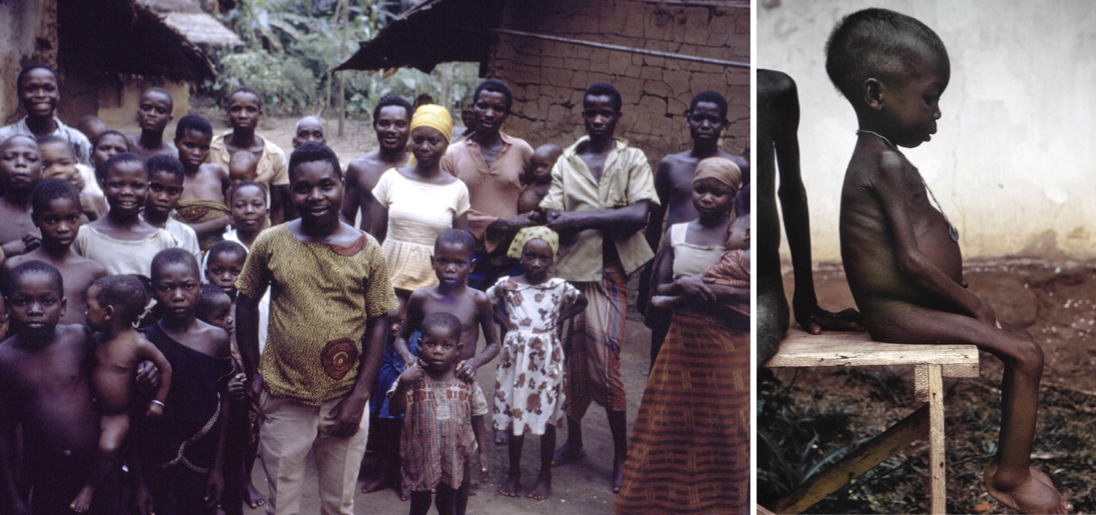
A group of refugees in Port Harcourt, 1968 (left); a Biafran child suffering the effects of starvation due to the federal blockade during the Nigerian Civil War (right).
The capture of Port Harcourt allowed the Federal Government to block the shipment of military equipment to the Biafran army. Unfortunately, the embargo also made it difficult for food and medicine to reach civilians. The result was mass starvation of over a million Biafran civilians, mostly women and children.
The Nigerian Civil War ended on January 15, 1970, with the surrender of Biafran leadership.
The Colonial Roots of War
If the coup of January 15, 1966 was the immediate cause of the civil war, its historical roots are traceable to British colonial rule.
Following the Berlin West African Conference of 1884/85—at which European imperial powers agreed on the principles of claiming colonial holdings—the British began expanding from their coastal enclave around the port of Lagos into the Nigerian interior.
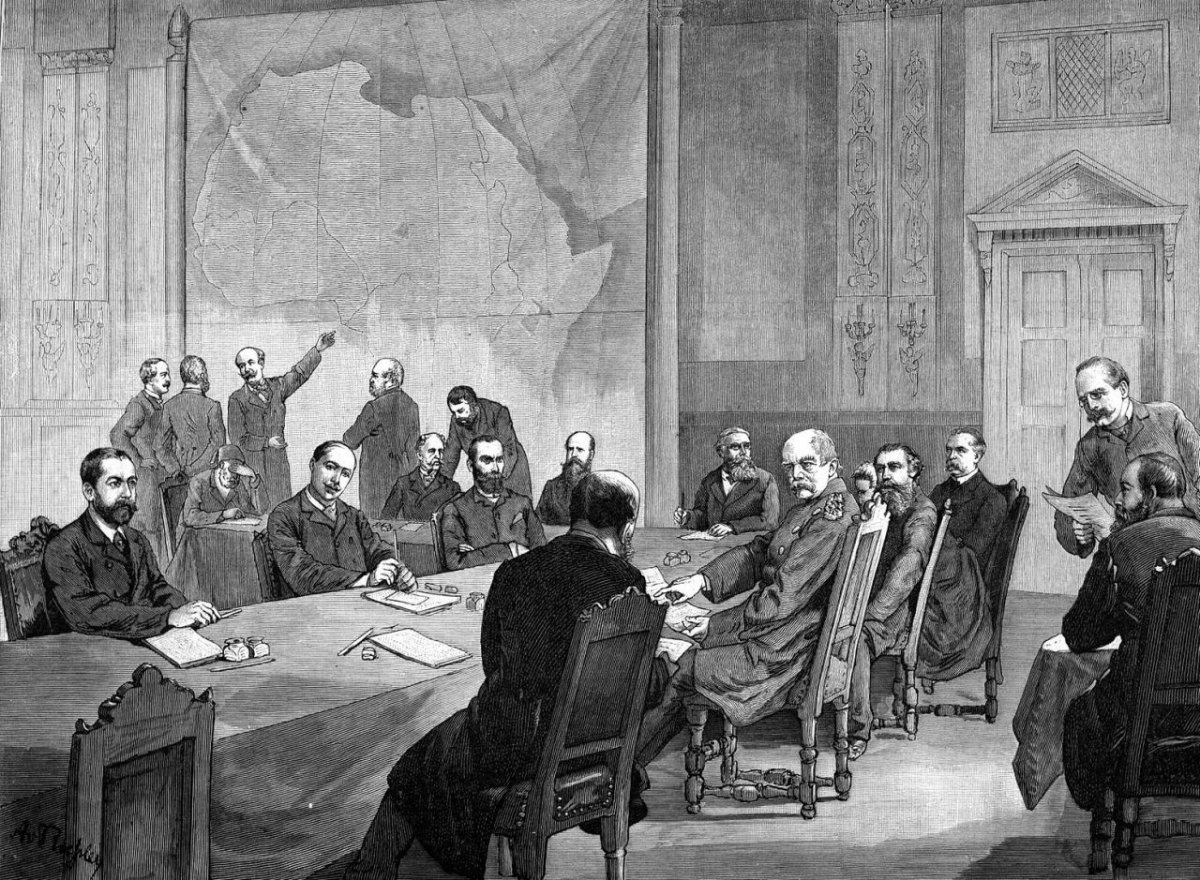
An 1884 illustration depicting representatives of the European powers at the Berlin Conference.
By 1900, most of southern Nigeria had fallen to the British through conquests and treaty negotiations. But the British had their eyes set to the north, on the Sokoto Caliphate. Founded by Usman dan Fodio in 1804, the Caliphate had become the largest state in West Africa by the turn of the century. After a protracted war and subsequent resistance, Sokoto came under full British control in 1906 and was renamed the Northern Protectorate.
Although the British abolished the Caliphate, the existence of its formidable administrative structures encouraged the British to implement a system of indirect rule (with which they had experimented in India). Indirect rule offered a degree of political autonomy to local rulers, in this case the Sultan of Sokoto and the Emirs under his suzerainty. In the Southern Province, on the other hand, the British combined direct and indirect rule, which varied in accordance with political and economic expedience.
On the eve of the First World War in 1914, the British united the two territories, thus marking the beginning of the creation of the Nigerian nation. But unification created a fragmented identity for Nigeria—a presumed Muslim-north versus a Christian-south—the problematic implications of which would reverberate during the civil war.
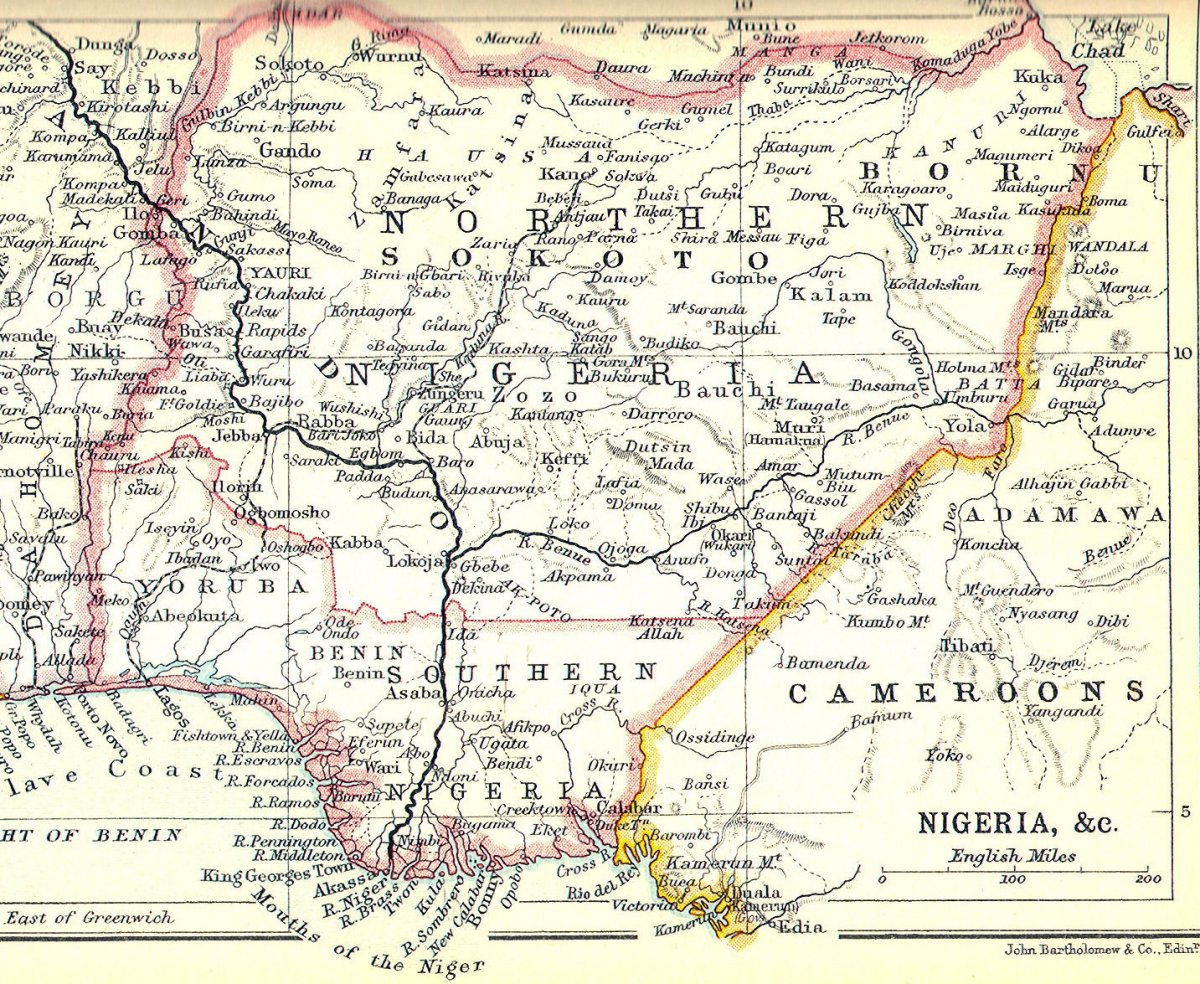
A map of Nigeria in 1914, following the unification of its Northern and Southern Provinces.
Nigeria’s ethnic diversity, with over 200 ethnic groups, was a crucial factor in reinforcing these regional divisions. Unification fused together culturally and ethnically distinct regions, which would continue to influence political alignments after independence.
The Muslim Hausa-Fulani of the Sokoto Caliphate constituted the largest ethnic group in the northern territory. They wielded significant political dominance throughout that region thanks primarily to the indirect-rule system.
In the South, the Yoruba ethnic group comprised about 70% of the population of the southwest. The majority of them were Christians, although there was also a sizable Muslim population as well as practitioners of indigenous faiths. In contrast, the southeast was overwhelmingly Christian, with the Igbos representing the largest ethnic group.
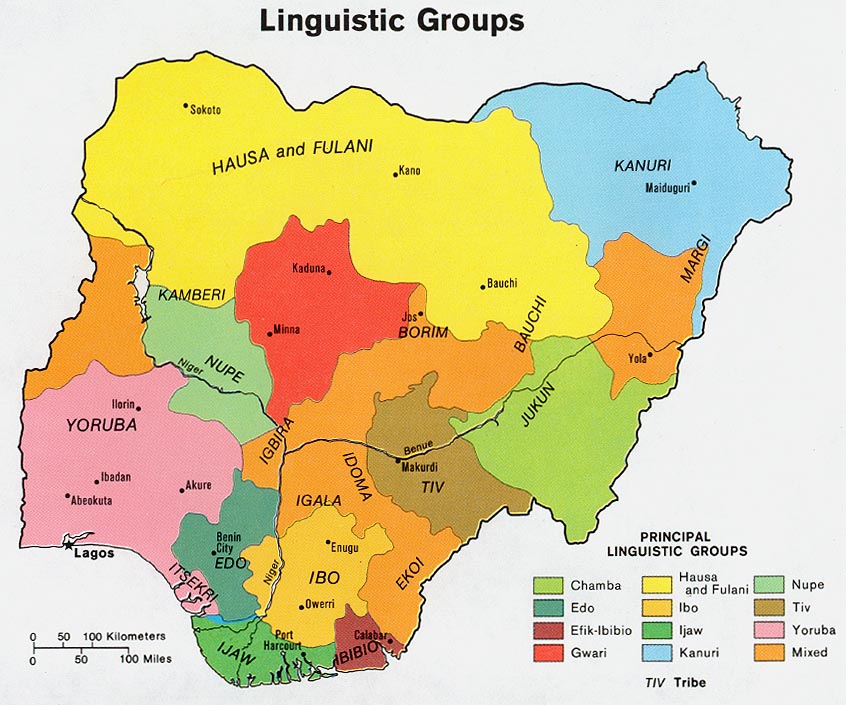
A map depicting the ethno-linguistic groups of Nigeria.
Unification gave the north a territorial advantage over the south, while the south had the advantage of relative economic development. The south benefited from its export of lucrative cash crops and a large educated elite created by educational institutions that missionaries established.
In the Muslim-dominated north, the British had discouraged Christian missionaries from launching missions and education institutions in an effort to avoid religious conflict. Consequently, at the time of independence, only a portion of northerners had obtained Western education and skills.
The complex configuration of ethnic and religious identities suggests that the nationalist leaders had to make significant political compromises to accommodate the country’s disparate cultural groups.
The causes of the Biafran crisis can therefore be located at the confluence of British colonial manipulation of ethnic differences and the failure of Nigerian nationalists to implement political arrangements that would foster political and economic equality.
A Local Conflict in the Cold War
Although the Nigerian Civil War occurred at the height of the Cold War—and in contrast to the Congo civil war that had ended just a couple of years earlier (1965)—neither its causes nor its operations could be blamed on tensions between East and West. This was primarily a local affair.
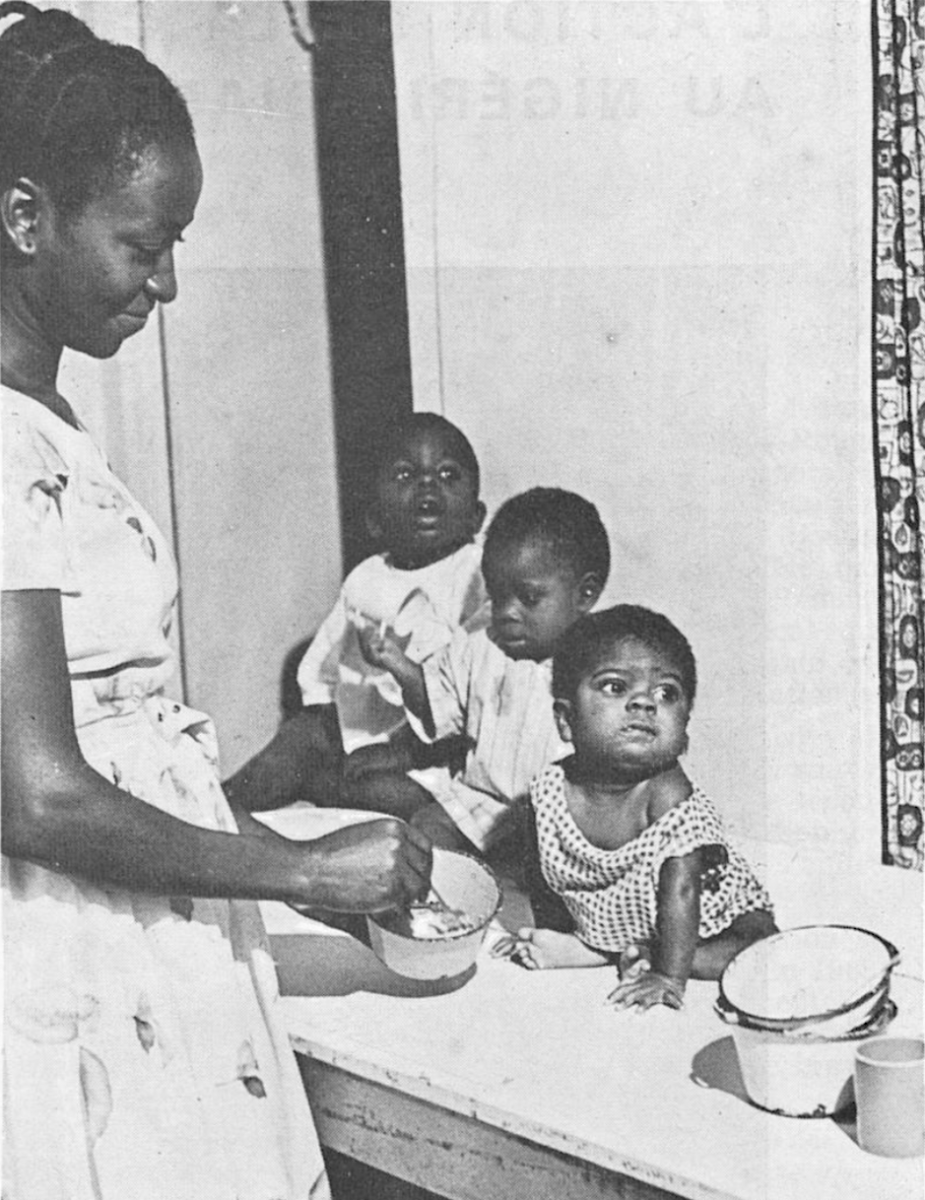
Nonetheless, for economic reasons, international governments weighed in on the conflict: Great Britain and the Soviet Union openly sided with the Federal Government of Nigeria, while France and Israel supported Biafra.
Within Africa, Gabon, Cote d’Ivoire, and the white-minority regime of Zimbabwe (then Northern Rhodesia) led by Ian Smith offered their support to the Biafran state. The rest of the continent privately sympathized with the Federal Government, but publicly claimed neutrality.
Believing in the propaganda that Muslims had declared war on Nigerian Christians, many Christian NGOs in Europe and the United States sided with Biafra. In reality, the war had nothing to do with religion. General Gowon, the Nigerian Head of State and leader of the Federal armed forces, was Christian, as was a significant population of the rest of the federal union.
“No Victor and No Vanquished”
General Gowon’s famous description of the war as one with “no victor and no vanquished” was an important rhetorical effort to heal wounds. Nigeria succeeded in averting what would happen to Sudan a couple of decades later, when Sudan split between a Muslim north and a Christian south.
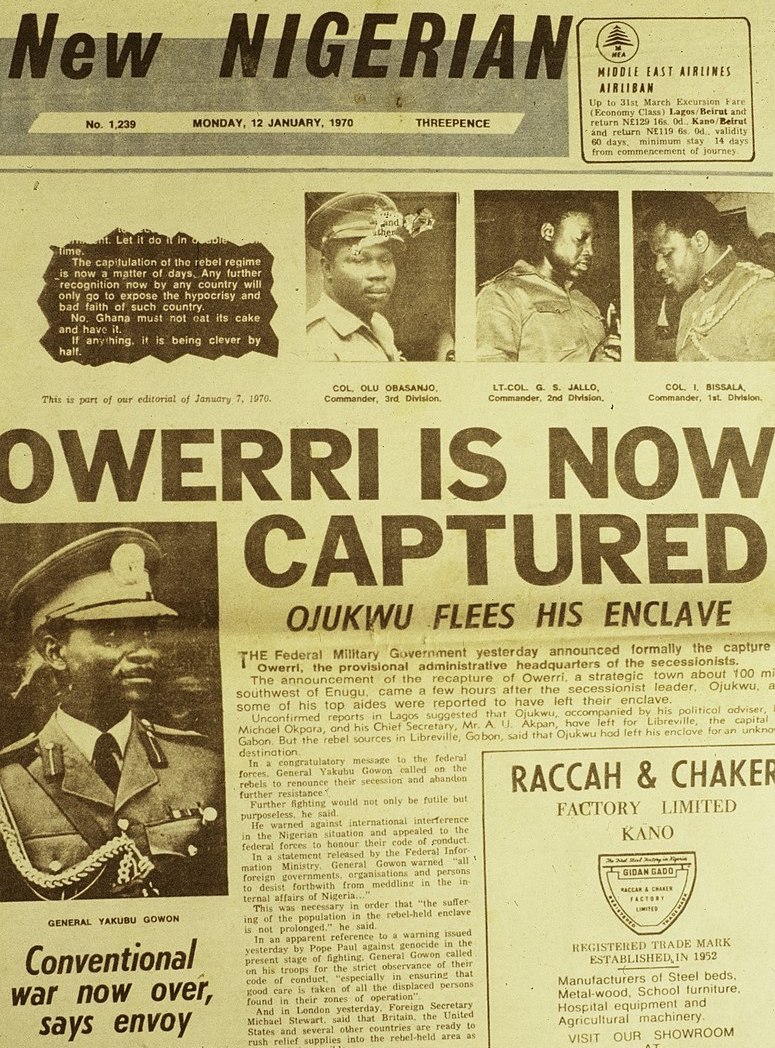
However, the scars remained in the public memory. The constant reference to the civil war as the source of Nigeria’s lack of unity and periodic instability suggests that the federal government won the war but lost the peace.
Yet, if Nigeria succeeded in preventing the dismembering of its parts, it is due to the tenacity of all Nigerian leaders who worked hard to maintain the union against all odds.
The survival of Nigeria as a nation has helped Africa. It provided the needed leadership in ending white minority rule in Zimbabwe, South Africa, and Namibia. In 1972, Nigeria led in the founding of the Economic Community of West African States (ECOWAS). With Nigeria’s leadership, ECOWAS peacekeeping forces contributed to ending civil wars in Sierra Leone and Liberia, albeit with some tactical errors.
Nigerians and Africans can, therefore, celebrate a war that had no victors and no vanquished!
